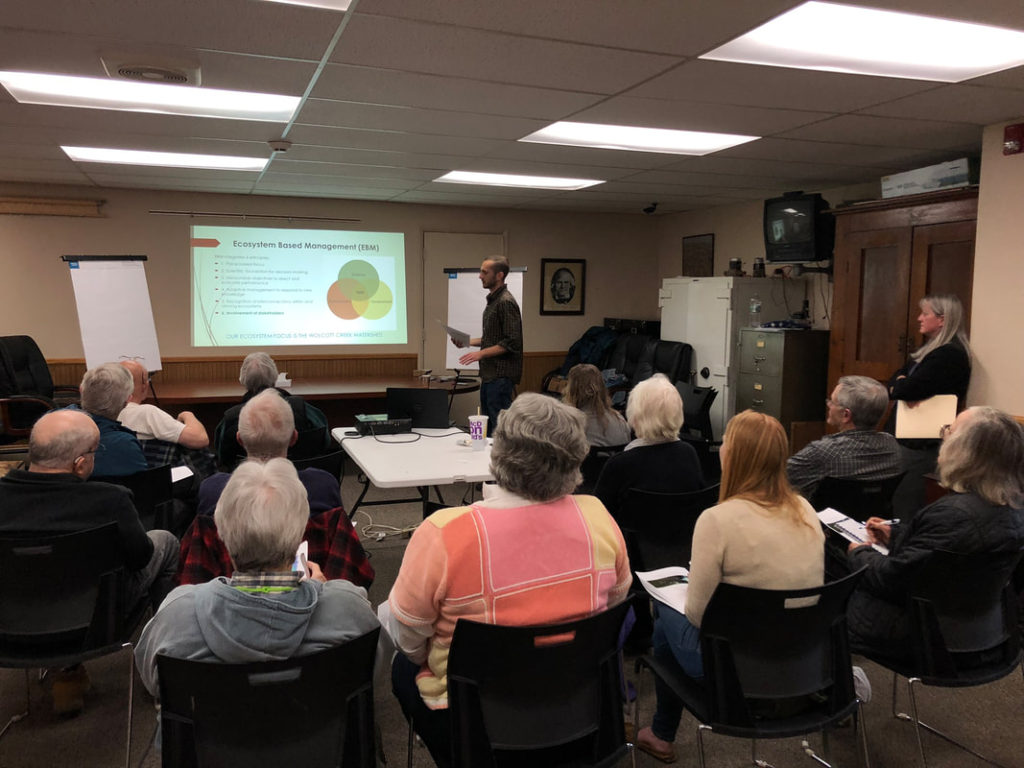Community-Driven Restoration of the Wolcott Creek Watershed
6/10/2019
By Paul Harris


While much of our work at Atlantic States Legal Foundation (ASLF) focuses on Syracuse, NY, we have been expanding our efforts to protect water resources on a regional scale in both urban and rural areas. As part of this plan we have been reaching out to various communities in Central and Western New York. Some of these communities are located in areas identified as high-priority for water resource protection by the Great Lakes Action Agenda (GLAA), and include the Wolcott and Sterling Creek watersheds.
With this identified community priority in mind, we pursued and received funding from the New York Sea Grant program to conduct a community-driven restoration planning process in the Wolcott Creek watershed. Since project initiation in January of this year we have been hard at work on the first phase of our Community Driven Restoration of the Wolcott Creek Watershed project.
Community participation is a cornerstone of this project. ASLF – in partnership with the Village of Wolcott – is facilitating a stakeholder-driven process to define community goals related to water resources in the Wolcott Creek watershed and then identify and prioritize the water resource-related assets to be enhanced and barriers to be overcome to reach those goals. ASLF will take the high-priority issues identified by the community and develop a portfolio of design and/or planning solutions to address them. With additional community input, ASLF will select one of those concepts to be developed into an actionable design/plan.
The process will be based on a series of three stakeholder workshops, the first of which occurred on April 30 of this year in Wolcott. For this workshop, we asked participants to set overarching goals for the water resources located in the watershed. Participants identified four key goals:Improving water quality in Wolcott Creek and Mill Pond
Making Wolcott Falls Park a more attractive, useable space
Expanding tourism in the area
Increasing local use of outdoor recreational resources
We also asked participants to identify and then prioritize the assets/barriers that should be targeted in our conceptual designs/plans to help achieve the above goals. The following were identified through a discussion and voting process:Address upstream runoff into Wolcott Creek and Mill Pond, perceived to be predominantly from agricultural practices;
Address Japanese knotweed and other invasive plants in Wolcott Falls Park;
Enhance and publicize Wolcott Falls Park;
Improve signage and marketing around these natural areas;
Leverage community organizations to help create, maintain, and monitor the restoration projects.
A complete summary of Workshop 1 is available on our website.
The second workshop will be held in early Fall 2019.At this event, ASLF will present drafts of the design/planning solutions for community feedback and will seek input to improve and tailor these ideas and to determine which project should be further developed. At the third and final workshop (late 2019/early 2020), ASLF will present the final actionable design/plan and the portfolio of additional conceptual projects.
If you live in the Wolcott Creek watershed and would like to be notified of future meetings, please e-mail us and we’ll put you on our mailing list. You can also send us your vision for the Wolcott Creek Watershed or additional suggestions on assets/barriers to be addressed in our conceptual design/planning portfolio. And, if you’re not a Wolcott community member, ASLF is always looking for feedback, so please feel free to reach out to us via our contact form about this project or any of the other work featured on our website.
